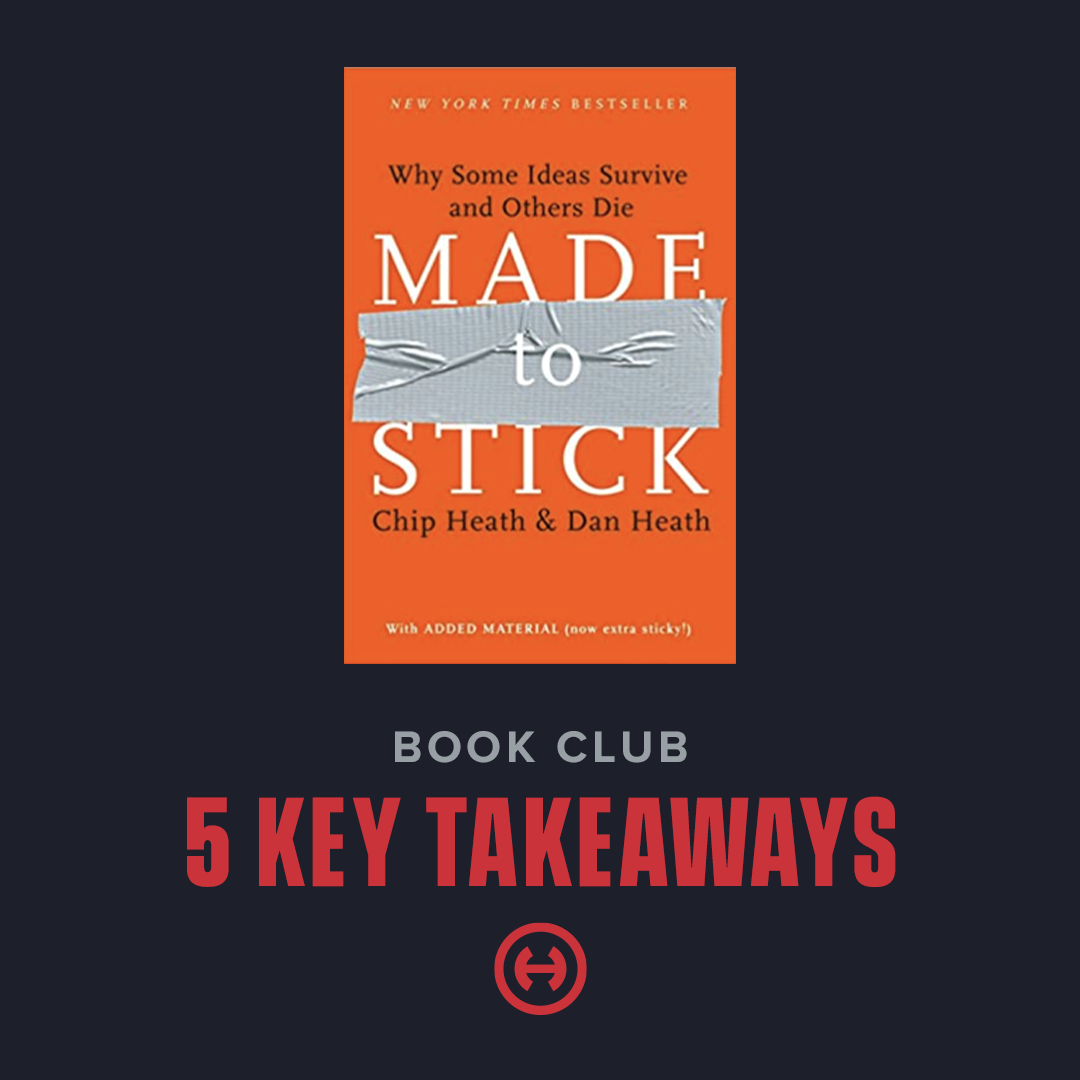In our latest agency book club, we examined “Made to Stick.” Building upon insights gained from “The Tipping Point” by Malcom Gladwell, brothers Dan and Chip Heath provide a unique spin on traits that enhance the “stickiness” of an idea.
If you want to understand why some ideas survive and others die, pick up a copy. If you’re short on time, here are five key takeaways for making ideas that stick and propel your brand’s marketing.
- Keep It Simple: While hard to come up with, the stickiest ideas tend to be the simplest. In fact, a truly great simple idea is profound, provides a lifetime of exploration and can spawn many more ideas that resonate with your target. Consider taglines like Nike’s “Just do it” and McDonald’s “ I’m loving it.” They’re not only simple, they stick out – and have remained sticky for decades and counting.
- Leverage the Unexpected: Before it can stick, a brand message must break through the clutter. Adding an element of surprise is an effective way to grab the audience’s attention, and infusing a bit of mystery will help you keep it. According to the “gap theory,” knowledge gaps pique curiosity and compel people to want to know more. Ideas with the right combination of the unexpected and the unknown can hook audiences and create excitement, all the while differentiating the brand so that it sticks with its audience.
- Establish Credibility: The more credible an idea feels, the more likely it is to stick with your target. Credible ideas tend to feature vivid details and be substantiated by facts. The authors outline various methods marketers can use to gauge whether their ideas feel authentic and trustworthy. One method was the Sinatra Test, a way to start spreading the news by confirming intrinsic credibility through use of a singular example, like “If I can make it here, I can make it … anywhere.” In other words, if an idea works in one challenging space, it’s likely to succeed in other places, too.
- Embrace the Emotional: While credibility is crucial, emotions play a powerful role in propelling the target to believe, care and act. Empathic brand messages underscore why the target should care – and express what it means for them to not only care more, but also do more or even be more. Take, for example, Mother Teresa’s statement, “If I look at the masses, I will never act. If I look at the one, I will.” This idea is simple, relatable and makes people feel like they can make a difference in others’ lives, and that feeling can inspire people to think and act differently. The same power is available to brands.
- Craft Meaningful Stories: Telling a good story can lead the target to act on our ideas. In addition to aligning thoughtfully with your brand’s core message, the authors believe that the best – and stickiest – stories tend to follow one of three plot types: The Challenge, The Connection or The Creative. The Challenge plot inspires and moves the audience to overcome obstacles, often using emotion to do so. The Connection plot helps to establish credibility by bridging knowledge gaps for the reader. The Creative plot leverages the unexpected to break through the clutter to reach and impact the audience. Any one of these story structures can be effective for getting your idea to stick with your target.
